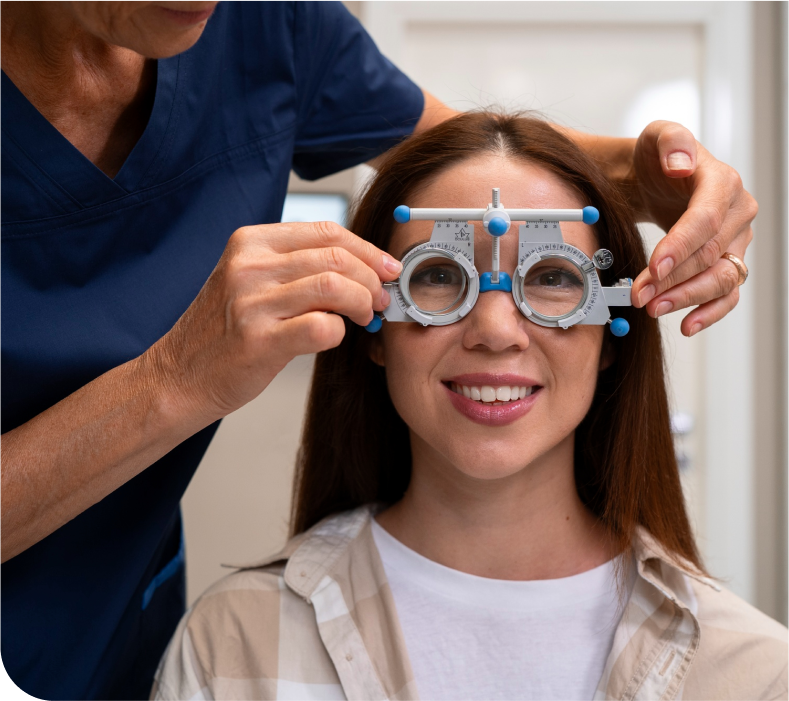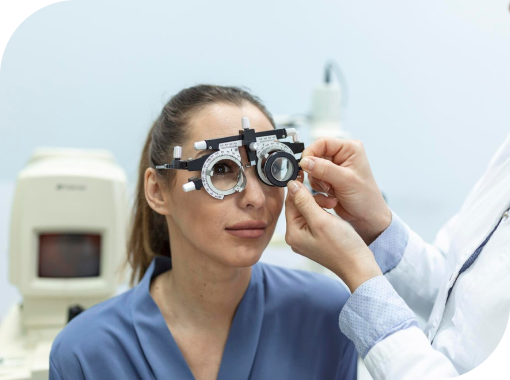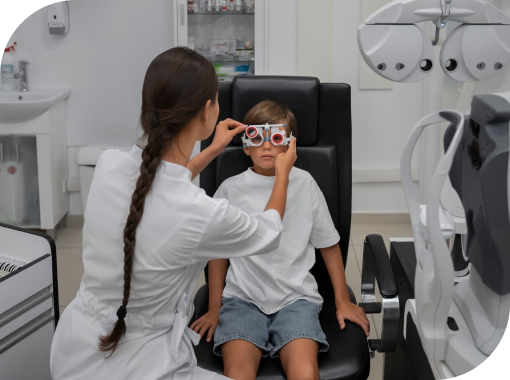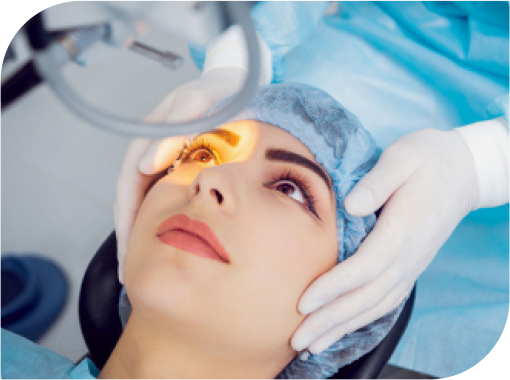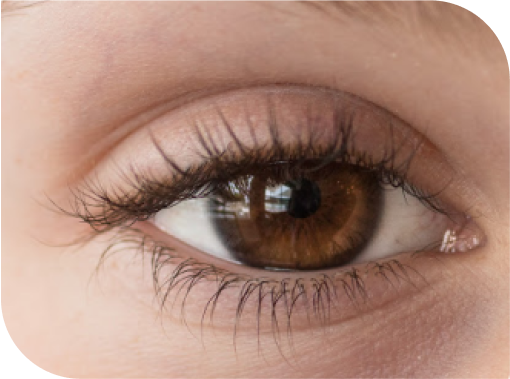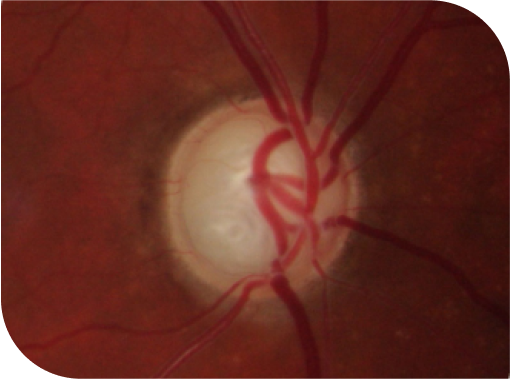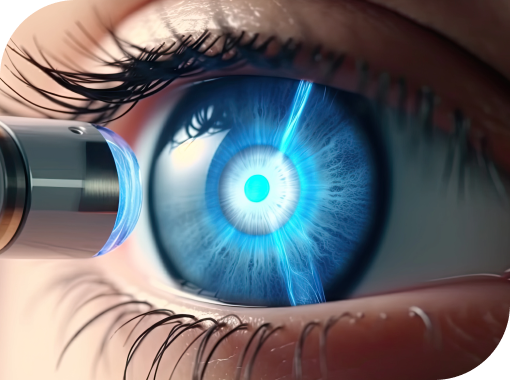
GLAUCOMA
Glaucoma is a condition that damages your eye’s optic nerve. It gets worse over time. It’s often linked to increase of pressure inside your eye called Intraocular pressure or IOP. Glaucoma tends to run in families. You usually don’t get it until later in life but even newly born babies and the young can be affected.
The increased pressure in your eye, can damage your optic nerve, which sends images to your brain. If the damage worsens, glaucoma can cause permanent loss of vision or even total blindness within a few years.
Most people with glaucoma have no early symptoms or pain. Visit your eye doctor regularly so they can diagnose and treat glaucoma before you have long-term vision loss.
If you lose vision, it can’t be brought back. But lowering eye pressure can help you keep the sight you have. Most people with glaucoma who follow their treatment plan and have regular eye exams are able to keep their vision.
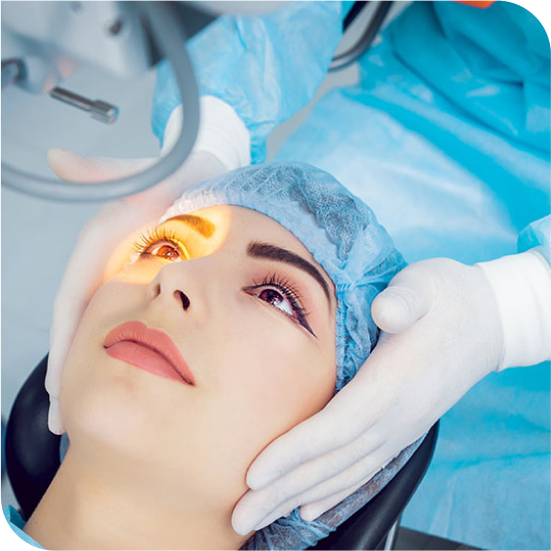
YOU’RE MORE LIKELY TO GET IT IF YOU:
- Are over 40 years old
- Have a family history of glaucoma
- Are nearsighted or farsighted
- Have poor vision
- Have diabetes
- Take certain steroid medications such as prednisolone
- Have had an injury to your eye or eyes
- Have corneas that are thinner than usual
- Have high blood pressure, heart disease, diabetes, or sickle cell anemia
- Have high eye pressure
TYPES OF GLAUCOMA
THERE ARE TWO MAIN KINDS:
Open-angle glaucoma: This is the most common type. Your doctor may also call it wide-angle glaucoma. The drain structure in your eye (called the trabecular meshwork) looks fine, but fluid doesn’t flow out like it should.
Angle-closure glaucoma: This is more common in Asia. You may also hear it called acute or chronic angle-closure or narrow-angle glaucoma. Your eye doesn’t drain like it should because the drain space between your iris and cornea becomes too narrow. This can cause a sudden increase of pressure in your eye. It’s also linked to farsightedness and cataracts.
LESS COMMON TYPES OF GLAUCOMA INCLUDE:
Secondary glaucoma: This is when another condition, like cataracts or diabetes, causes added pressure in your eye.
Normal-tension glaucoma: This is when you have blind spots in your vision or your optic nerve is damaged even though your eye pressure is within the average range. Some experts say it’s a form of open-angle glaucoma.
Pigmentary glaucoma: With this form, tiny bits of pigment from your iris, the coloured part of your eye, get into the fluid inside your eye and clog the drainage canals.
SYMPTOMS
Most people with open-angle glaucoma don’t have symptoms. If symptoms do develop, it’s usually late in the disease. That’s why glaucoma is often called the “silent thief of vision.” The main sign is usually a loss of side, or peripheral, vision.
Symptoms of angle-closure glaucoma usually come on faster and are more obvious. Damage can happen quickly. If you have any of these symptoms, get medical care right away:
- Seeing halos around lights
- Vision loss
- Redness in your eye
- Eye that looks hazy (particularly in infants)
- Upset stomach or vomiting
- Eye pain
DIAGNOSIS
Glaucoma tests are painless and don’t take long. Your eye doctor will test your vision. They’ll use drops to widen (dilate) your pupils and examine your eyes. They’ll check your optic nerve for signs of glaucoma. They may take photographs so they can spot changes at your next visit. They’ll do a test called tonometry to check your eye pressure. They may also do a visual field test to see if you’ve lost peripheral vision. If your doctor suspects glaucoma, they may order special imaging tests of your optic nerve.
TREATMENT:
Your doctor may use prescription eye drops, oral medications, laser surgery, or microsurgery to lower pressure in your eye.
Eye drops: These either lower the creation of fluid in your eye or increase its flow out, lowering eye pressure. Side effects can include allergies, redness, stinging, blurred vision, and irritated eyes. Some glaucoma drugs may affect your heart and lungs. Because of potential drug interactions be sure to tell your doctor about any other medical problems you have or other medications you take. Also let them know if it’s hard for you to follow a regimen involving two or three different eye drops or if they have side effects. They may be able to change your treatment.
Oral medication: Your doctor might also prescribe medication for you to take by mouth, such as a beta-blocker or a carbonic anhydrase inhibitor. These drugs can improve drainage or slow the creation of fluid in your eye.
- IridotomyThis makes a tiny hole in your iris to let fluid flow more freely.
Microsurgery: In a procedure called a trabeculectomy, your doctor creates a new channel to drain the fluid and ease eye pressure. Sometimes an a valve or an implant may be required in addition to trabeculectomy.
Open-angle glaucoma is most often treated with combinations of eye drops, laser trabeculoplasty, and microsurgery. Doctors tend to start with medications, but early laser surgery or microsurgery could work better for some people.
Acute angle-closure glaucoma is usually treated with a laser procedure.
Treatments
Book an Appointment
Have any questions or feedback, Feel free to reach out to us. We always available to help
